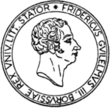*The Mechanical Calculating Machine of Heinrich Esser from Aachen: A nearly forgotten Pioneer *
On October 20th 2000, the Permanent Secretary of the Ministry for Schools, Science and Research, Hartmut Krebs, and the Secretary of the Foundation for Arts and Culture of Nordrhein-Westfalen, Fritz-Theo Menniken, presented the one and only mechanical calculating machine ever been built in Nordrhein-Westfalen to the Arithmeum. It is the machine built by Heinrich Esser from Aachen, which he constructed in 1892. With this machine, an exponent of regional history returns from Great Britain to its place of origin. Heinrich Esser, born in 1845 in Pingsheim near Euskirchen, lived and worked as municipal police building inspector in Cologne. In 1892 he constructed the mechanical calculating machine which can now be admired in the Arithmeum. The Esser machine is a four-species machine, i.e. it is capable of adding, subtracting, multiplying and dividing. It is, however, unique among four-species pinwheel machines in that way that it has a novel tens-carry mechanism. When one goes from nine to zero, the adjacent place has to be moved one position on. Heinrich Esser accomplished this by means of a pin which is pushed out by a lever and then engages an adjacent cogwheel. The exhibited Esser- machine is an interesting source of information regarding the development process of Esser’s patented machine. In 1892 Esser applied for a patent, which was granted in 1895. The comparison of the patent and the exhibited machine shows that the latter is an older prototype. Several essential details of the patented machine are missing. The Esser machine in the Arithmeum does not have tens-carry in the revolution counter, which is necessary in order to be able to do abridged multiplication and division. There are also other missing features which mark this machine out as an early model: the main crank has no rest position lock and there is no bell to signal an overflow of the result mechanism. The Esser-machine was invented when the first mass-produced calculating machines were beginning to appear. Esser must also have envisaged the mass-production of his machine, as it consists of modules that can easily be exchanged to meet the individual needs of customers with respect to capacity. But as Esser was only able to devote his rather restricted free time to the development of his machine and his application for a patent was thus delayed, the sewing machine factory Grimme, Natalis & Co. in Braunschweig began mass-producing calculating machines before he could. Esser is one of many engineers working on mechanical calculating machines at that time, and it is only due to unlucky circumstances that his machine was all but forgotten.






